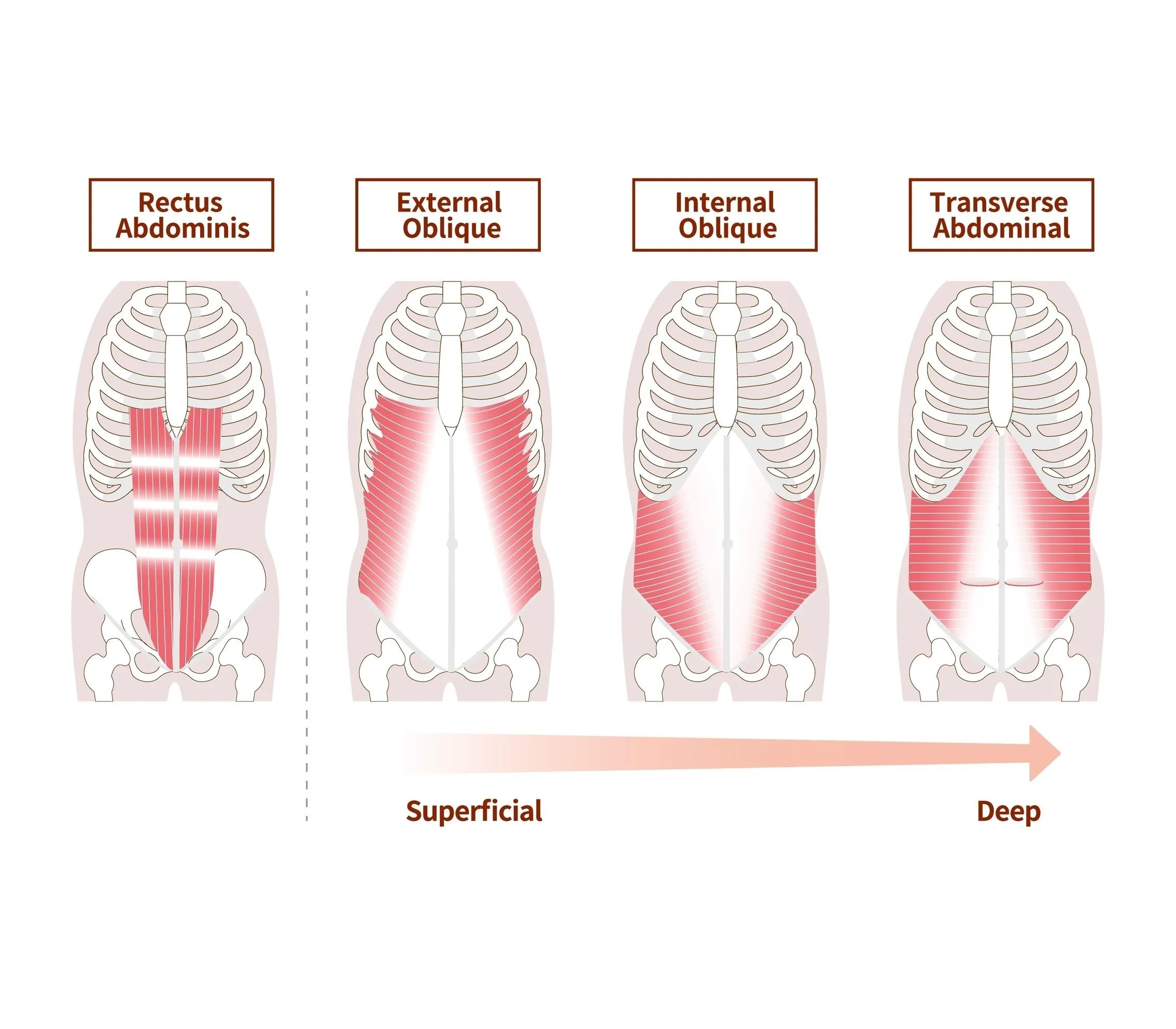The Unsung Hero of the Abdominals
The abdominal muscles play a huge role in the support and stability of the lumbar spine. Typically when we think of the abs we think of a 6 pack. The “6-pack” muscle, rectus abdominis (RA), tends to get all the credit for the abdominals but there is another layer that deserves more of the spotlight.
The transverse abdominis (TA) is the deepest layer of abdominal muscles and connects to the thoracolumbar fascia (lower back region) and wraps around (with additional attachments) to the front midline of the abdomen called the linea alba. The TAs function are as follows:
Supports the internal organs
Assists in managing intra-abdominal pressure (with forced exhalation, coughing and defecating)
Lumbopelvic support during movement
Traditional abdominal strengthening exercises, such as crutches and sit ups, have a strong focus on the flexion of the spine. The trouble with these exercises is that the muscle that is mostly being strengthened is the RA, the six-pack muscle.
Don’t get me wrong, this muscle is important however, when doing functional movement, for example a squat or a deadlift, we need the spine to be stabilized to reduce the risk of injury. In a squat and a deadlift the spine shouldn’t appreciably change positions during the lift.
So why is there such an emphasis on crunches and sit ups in the fitness industry? I don’t know for sure but I imagine it has something to do with the aesthetics of a six-pack which we are not going to unpack in this blog post.
So how do we train the TA for spinal stabilization?
We first need to find this muscle and make sure that we are activating it correctly.
Start with practicing forced exhales: long exhales getting all the air out of the lungs, as if you were blowing out of a straw. We know that one of the functions of the TA is to help with forced exhalation so that is the easiest way to activate it! Here is a how-to video.
What you should see and feel is a drawing in of the abdominal muscles, not a pushing out. You can feel this just inside of your pelvic bones and it should feel like your abs are going in and up. There should be no pressure down to the pelvic floor.
After practicing this and getting really good at it, you can practice holding the TA muscle contraction (the feeling at the end of the exhale, the brace) and breathing while bracing. From there you can practice a low march as seen here and progress to an advanced march here.
Try to avoid any pushing out or creating a “bread loaf” look as that is the rectus abdominis trying to compensate.
It may feel challenging but it's only because it’s new! These exercises directly relate to our daily function and will help you perform better.
Do you have back pain and want guidance to get to the root cause? Reach out to us at Q4 Physical Therapy. As performance physical therapists, getting you back to what you want to do is our top priority! Call us at 508-614-9499 or email us at martha@q4pt.com.


